

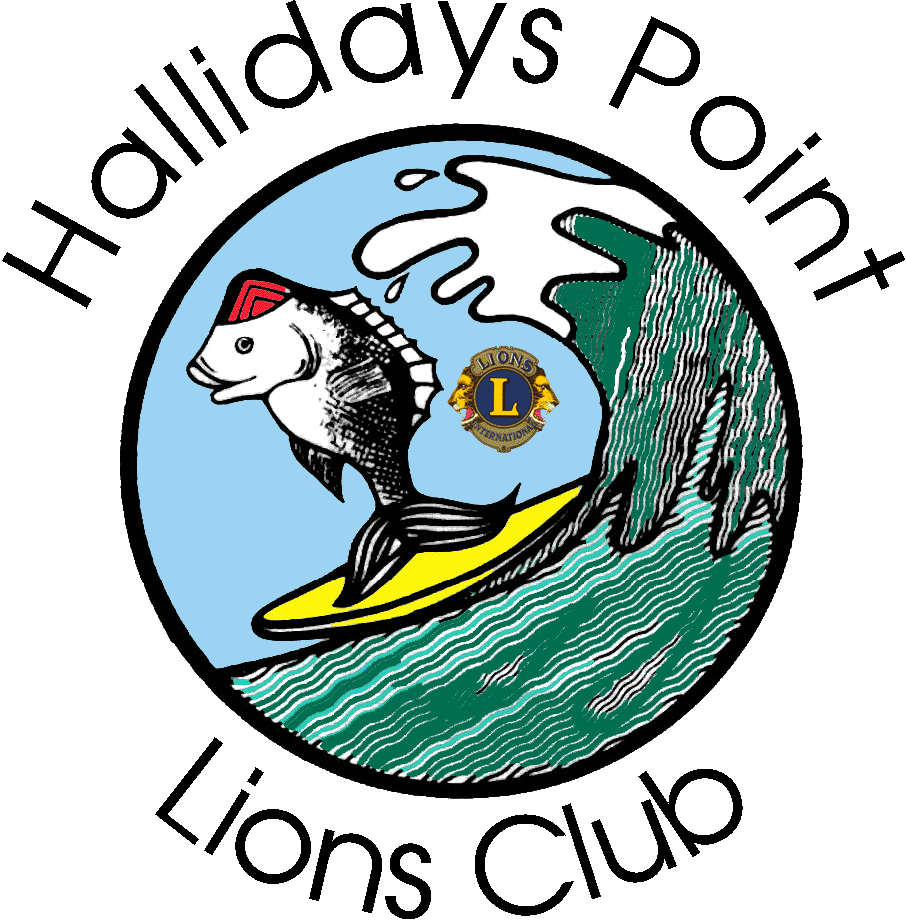
SUCCESSFUL SEA TURTLE NEST RELOCATION JUST NORTH OF WALLABI POINT
There is a little group of volunteer citizen scientists at Diamond Beach who have been trained by NSW TurtleWatch to collect data on marine turtle nesting and monitor progress of nests in conjunction with NSW National Parks and Wildlife Service (NPWS). As marine turtles are a protected species in NSW, NPWS must be contacted with any sightings of marine turtles whether injured or dead marine turtles, hatchlings or any turtle nests.
As the turtle nesting season is once again fast approaching, starting in November and running through to April or May next year, readers might like to hear about an interesting episode that happened last season at Wallabi Beach just to the north.
Late December last year a female turtle came ashore one night at North Wallabi Beach and laid her nest near the base of a steep bank where storms had significantly eroded the frontal dune. Early morning walkers found the adult turtle tracks and the site where she had dug her nest and laid her eggs. The female turtle camouflages her nest, throwing sand everywhere, before returning to the water. The eggs were on their own from here on in!
However, where she had made her nest was too close to high water mark and vulnerable to washing away should there be any big seas. As with much of Wallabi and Old Bar beach the coastal dunes have long been affected by severe coastal erosion and have eroded back significantly leaving steep banks that nesting female turtles cannot climb.
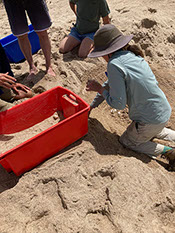 The local residents alerted NPWS staff and a team of locals and NSW TurtleWatch volunteers were gathered to assess the nest. The site of the nest was marked using three measurements which intersect using triangulation. Liaising with the NSW TurtleWatch project coordinator, Holly West, the volunteers were able to identify that the species was a loggerhead turtle (Caretta caretta) and she had successfully laid her eggs, but the location could be problematic.
The local residents alerted NPWS staff and a team of locals and NSW TurtleWatch volunteers were gathered to assess the nest. The site of the nest was marked using three measurements which intersect using triangulation. Liaising with the NSW TurtleWatch project coordinator, Holly West, the volunteers were able to identify that the species was a loggerhead turtle (Caretta caretta) and she had successfully laid her eggs, but the location could be problematic.
As it was a La Nina year there was an increased chance of storms and cyclones so the decision was made by NPWS to relocate the nest higher on the beach, a decision that is never made lightly as you can cause damage to the eggs if not done correctly. NSW TurtleWatch staff member, Lauren Hasson, attended the nest with NPWS and local volunteers to move the nest to a better location and give it a fighting chance.
The process had many risks as turtle eggs cannot be rotated in any direction other than the orientation they were laid in. Therefore, Lauren’s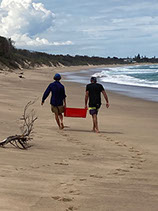 expertise was essential to a successful relocation and egg survival.
expertise was essential to a successful relocation and egg survival.
The first step was to find a suitable alternative site where a second nest could be located. A site on slightly higher fore dune was discovered about 300 metres to the north. Lauren dug a new nest according to the shape and dimensions known for adult marine turtle.
Then the excavation commenced at the original nest site. The eggs were meticulously moved one by one into large boxes. Once full the boxes were carefully walked up the beach ensuring it stayed facing the same direction until they reached the new nest site. There were 110 eggs in this nest – all of which were painstakingly moved with the utmost care.
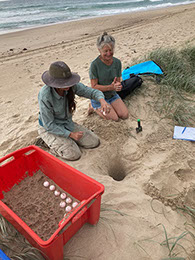 Once at the new nest site, the same process was undertaken in reverse and each egg was carefully placed in the new nest in exactly the same orientation as it had been in the original nest. Once complete the nest was infilled and four transects established to mark the nest site. The whole process took all day.
Once at the new nest site, the same process was undertaken in reverse and each egg was carefully placed in the new nest in exactly the same orientation as it had been in the original nest. Once complete the nest was infilled and four transects established to mark the nest site. The whole process took all day.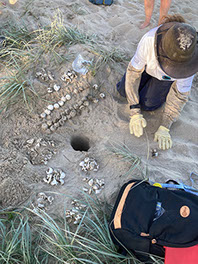
Volunteers closely monitored the nest as it survived each storm, and then watched each day for any evidence of hatching. Then, to everyone’s excitement, on the 16th March 2022 the tracks of baby turtle hatchlings were spotted at the nest site. The next step was to plan an excavation, this is done a few days after a nest hatches to determine the hatch success and rescue any hatchlings still trapped in the nest.
NPWS and NSW TurtleWatch performed the nest excavation a few days later. Out of 110 eggs relocated there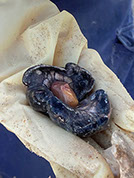 were 72 successful hatchlings that escaped the nest determined from clean eggshells which was fantastic news. Some 27 eggs had not successfully developed either due to bacterial infection or had died from unknown causes in the nest. A further 5 partially developed embryos were recorded and 2 eggs each contained a set of advanced twins much to the surprise of everyone.
were 72 successful hatchlings that escaped the nest determined from clean eggshells which was fantastic news. Some 27 eggs had not successfully developed either due to bacterial infection or had died from unknown causes in the nest. A further 5 partially developed embryos were recorded and 2 eggs each contained a set of advanced twins much to the surprise of everyone.
Overall, a very rewarding experience for all parties involved in this rescue operation. NSW TurtleWatch volunteers will be out monitoring local beaches from this November for signs of green or loggerhead marine turtle nesting activity. Diamond Beach is one of the southern most beaches on the east coast of Australia known for successful marine turtle nesting from records collected to date. 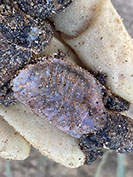
This nest was one of four that were successfully relocated and hatched during the last sea turtle nesting season. With a third La Nina year upon us it is vitally important that sea turtle nests are reported as soon as possible so that we can gather information to protect and monitor the nests of these threatened species. 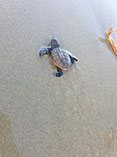
NSW TurtleWatch has been developed by Australian Seabird and Turtle Rescue and supported by the NSW Government through Saving our Species, the Marine Estate Management Strategy and NPWS. For more information about NSW TurtleWatch you can email turtlewatchnsw@gmail.com or contact Holly West on 0468 489 259.
Prepared by Barb Richardson
NSW TurtleWatch Volunteer
Diamond Beach



